Pioneers of motoring: 10 of the most epic driving adventures

Citroën’s plan to celebrate the centenary of its legendary 1922 crossing of the Sahara aims to prove to the world that electric vehicles (EVs) are just as capable as fossil fuel-powered ones.
The proposed start and finish dates are December 19 to January 7, the same as those of the original epic but a century later; accompanying the range of new EVs (including a battery-powered concept car) will be replicas of the half-tracks used 100 years previously.
Sticking to the original route where possible, the train of vehicles will aim to cover 1,970 miles in 21 days, travelling between Touggourt, Ouargla, In-Salah, Inifel, Tamanrasset, Tin Zaouatine, Tin Toudaten, Kidal, Bourem, Bamba and Timbuktu.
It got us thinking about equally epic motorised journeys of the past, so dust off your pith helmet and marvel at the heroics of these 10 heroic adventures.
Across the Sahara by car, 1922
There were previous Saharan explorations by car before Citroën's. In 1910-11 British Napiers had reached as far south as Ghardaia but it was André Citroën, boss of the eponymous car-making firm, who saw the publicity and commercial advantages of a successful crossing of the 3.5 million square miles of the Sahara, described in T.R. Nicholson's Five Roads To Danger as "a desert not only of great sand seas, but of naked wastes of burned and blasted rock and gravel".
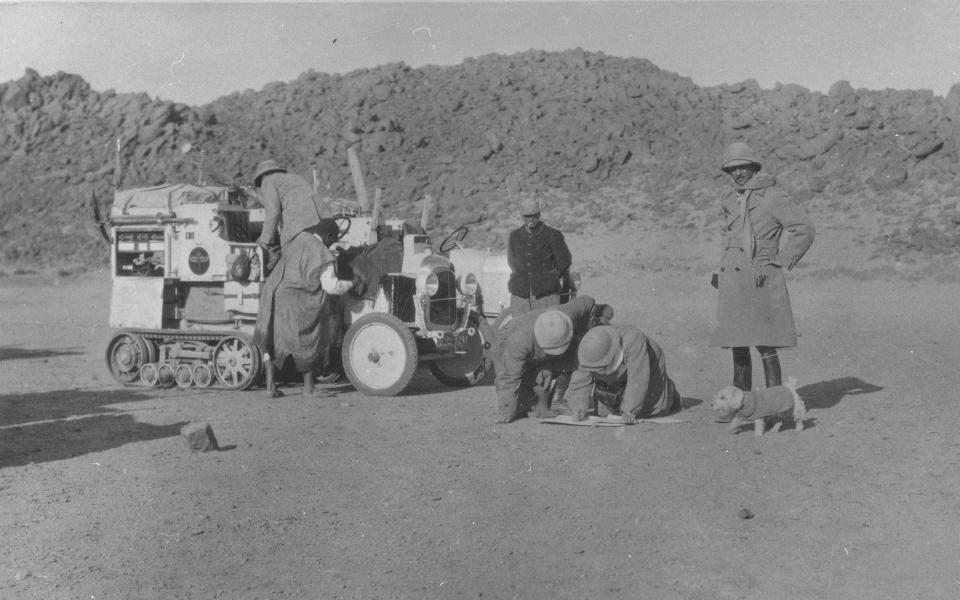
Using Adolfe Kégresse’s extraordinary caterpillar (autochenille) system attached to a B2 Citroën, which was one of Europe's first mass-produced cars, five half-tracks set off on December 17 1922 with Georges-Marie Haardt, Citroën's managing director, Louis Audouin-Dubreuil, experienced desert explorer, 11 handpicked men and Flossie the Sealyham Terrier.
This was dangerous stuff indeed, not just the desert but also the fearsome Tuareg tribesmen whose broadswords and lances would despatch the unwary in seconds.
"Ignorant men and lunatics, who travelled alone or ill-equipped, simply disappeared," wrote Nicholson.
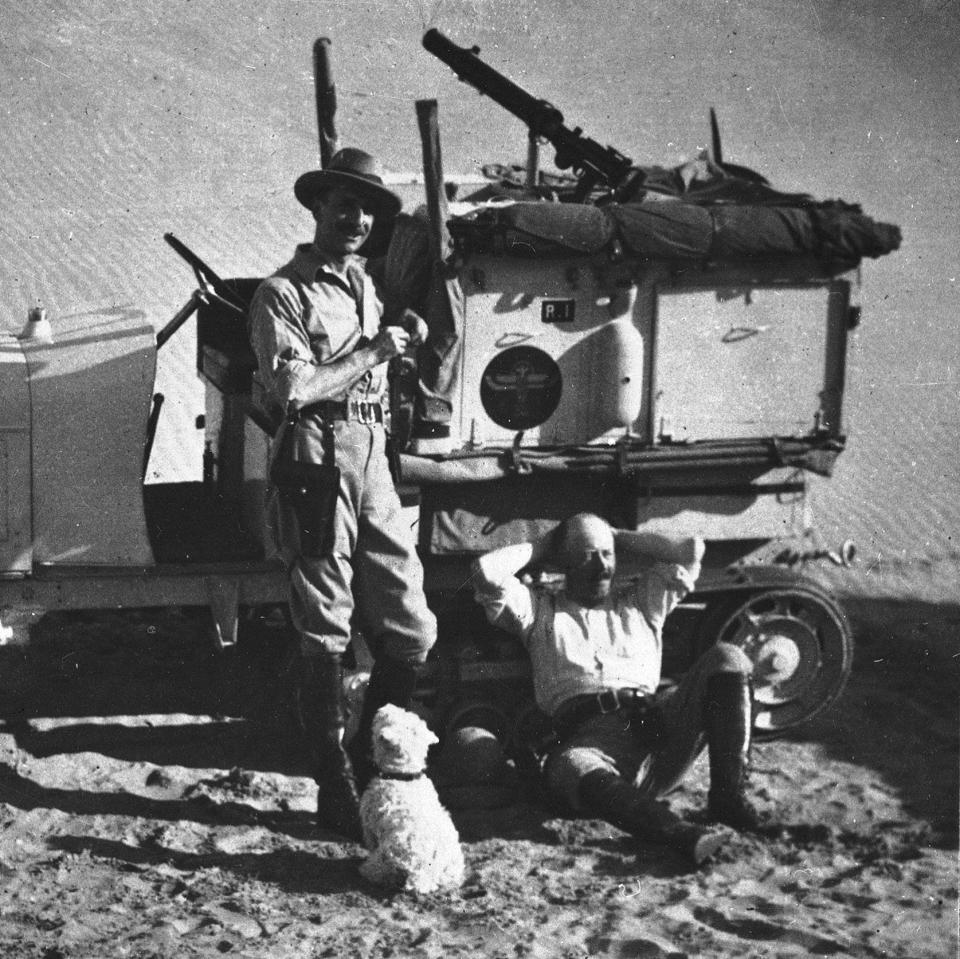
They made it, of course: 2,000 miles in just 22 days from Algiers to Timbuktu, though the great dunes (ergs), sharp rocks, and overcoming lost tracks, split driving wheels, the inhospitable Hoggar massif, together with crushing fatigue, heat exhaustion and guides who failed to take into account the relative speed of cars against camels. And while the cars' machine guns were unveiled on a number of occasions, basic good manners, feasts, gifts and Flossie charmed the Tuareg theat.
Interest was sensational. André Citroën met the expedition on its return journey and in the UK the Kégresse vehicles were bought for use on Scottish shooting estates and Queen Mary was photographed in a Kégresse at a field day in 1925. Other expeditions including the 1922/1924 Croisière Noire and the 1931/1932 Croisière Jaune followed.
The Great Peking to Paris race, 1907
Documented in Luigi Barzini's book Peking to Paris (1908) and Allen Andrews' The Mad Motorists (1964), the Peking to Paris was one of the first and most enduring motoring challenges. The gauntlet was thrown down by Le Matin newspaper on the front page of January 31st 1907; "The supreme use of the automobile is that it makes long journeys possible," it said. "Its effect is to make man the master of distance… But all we have done is make it go round in circles… Is there anyone who will undertake to travel this summer from Paris to Peking [sic] by automobile?"

Within days, the challenge had been taken up by the Marquis de Dion and eventually it included five entries including an Italian nobleman, a conman and Luigi Barzini, special correspondent of The Daily Telegraph. There were no rules and barely any roads on the 12,000-mile route and the prize was a magnum of Champagne. Brilliantly, the chosen route followed the telegraph offices across the continent so the journalist passenger in each car could file copy en route.
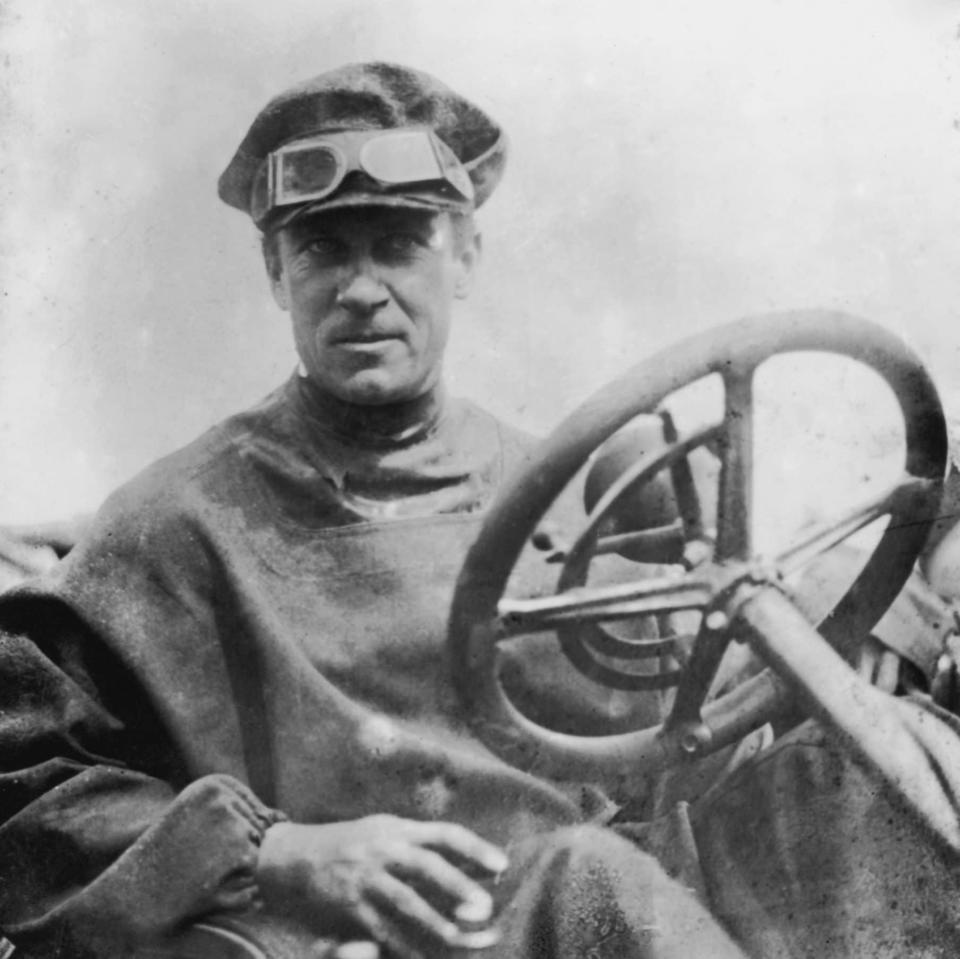
Despite taking a massive detour from Moscow to St Petersburg for dinner, the race was won by Prince Scipione Borghese in a 35/45HP 7.5-litre Itala with Barzini on board, and in second place was Charles Goddard in a Spyker.
"I went off quietly," wrote Barzini about when the festivities were over, "and had the happiness to mingle once again unknown among the crowd, leaving to the prince alone the onerous burdens of popularity… sic transit gloria."
Ben Carlin – first true circumnavigation of the world, 1947-1958
Australian Ben Carlin was a mining engineer who had served as a sapper in the Second World War and resettled with his second wife, Elinore, in the US. Inspired by a wartime idea he'd had of circumnavigating the globe in a GPA, or Seep, an amphibious version of the American Jeep, he proposed to Elinore that they should honeymoon while crossing the Atlantic in such a vehicle.
He purchased one for $901 in a government auction and they named it (with extraordinary optimism), Half-Safe.
Their stupefyingly hazardous trip commenced in Montreal, Quebec in 1947. It took them four attempts, however, to get from New York across the Atlantic, as they were beaten back by mechanical failure, carbon monoxide poisoning, seasickness and steering problems. The vehicle had no self-steering gear so had to be helmed at all times, it rolled like a barrel, had no radio communications, was deafeningly loud and the single bunk was only five-feet wide – some honeymoon.
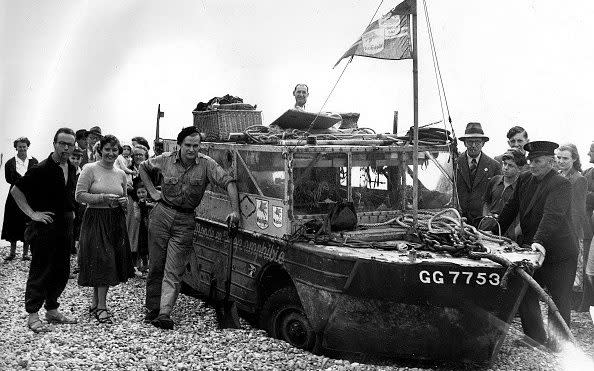
Arriving in the Azores, the Carlins toured south-western Europe and spent five years in Britain earning enough to repair Half-Safe and continue, during which time Ben penned a book: Half Safe: Across the Atlantic by Jeep.
Recommencing the journey in 1955, they drove through France, Switzerland, Italy and Greece and Turkey crossing the Bosporus and travelling through Asia to India then catching a steamer to Australia – Carlin reporting that the “murderous roads of Persia” were much worse than the Atlantic.
Elinore left him in Australia in 1956, but Ben continued with fellow Aussie Barry Hanley, back to India and up through Bangkok, Thailand and Indonesia. Hanley was replaced in co driving duties by Boyé Lafayette de Mente, a correspondent for The Japan Times, who accompanied him to Anchorage and subsequently wrote a book Once a Fool: From Tokyo to Alaska by Amphibious Jeep.
Carlin finally made it across the Aleutian Islands chain and drove down to Seattle, arriving in November 1957, and back to Montreal by November 13, 1958.
In 10 years Carlin and Half-Safe had travelled 11,050 miles by sea and 38,987 miles by road, driven through 38 countries and over two oceans – the entire trip is reported to have cost $35,000.
Bertha Benz – first motorised cross-country journey, 1888
The 66 miles of road between Mannheim to Pforzheim in Germany doesn't seem such a big deal these days; the fastest (but longest) route via the A5 takes about an hour in a good car.
Yet in 1888 Bertha, Karl Benz’s wife and business partner, took to unmetalled wagon tracks in the Model 3 and made the first long-distance motor car journey.
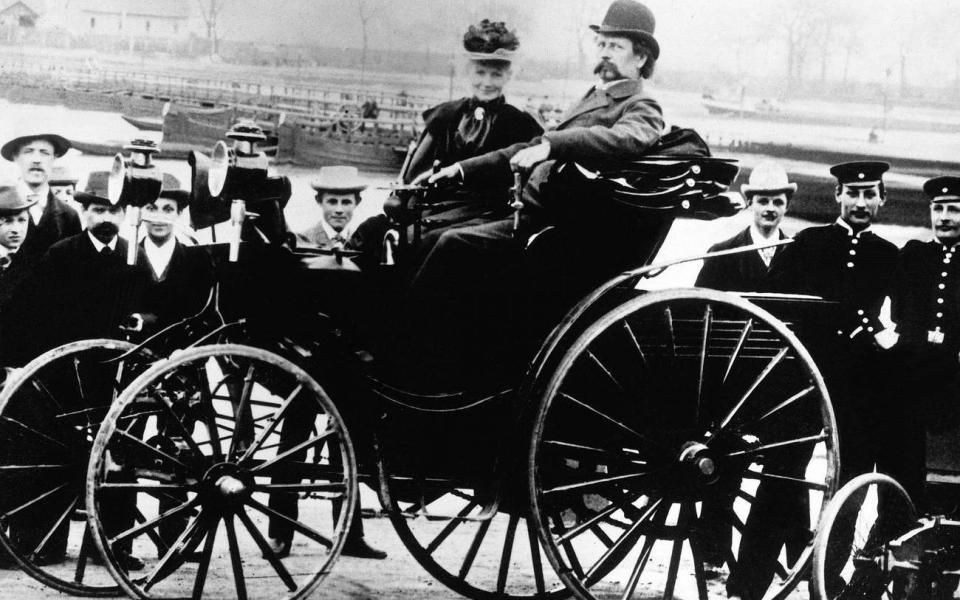
This indomitable woman had invested her entire dowry in her husband's endeavour and on January 29, 1886 they had filed a patent for the motor car. But no one took up the idea with hard cash and this journey was as much to prove to the world as it was to her husband that the motor car had a future.
She set out at dawn on August 5, with her sons Richard (13 years) and Eugen (15) on roads that were normally only used by horses and carriages. The 2HP tricycle could only manage a top speed of 10mph, but it had rack-and-pinion steering, a proper rear differential and electric ignition.
The journey wasn't without incident; a blocked fuel line was cleared with a hat pin, chafed wiring was bound with a garter belt and the brakes were relined en route by a shoemaker – in so doing Bertha had invented the brake lining.
Fuelled by “Ligroin” petroleum ether, the little car only had a fuel capacity of 4.5 litres so Benz had to refuel from a chemist in Wiesloch, which is the subject of a great video made by Mercedes-Benz of a refuelling stop en route.

The journey proved the worth of the motor car - and not only to her husband. Bertha showed that the Benz would need more gears to get up hills and better brakes to get down them safely, it also established the test drive as a way of proving the car's worth to the public and was also the first example of vehicle twoking (taking without owner's consent).
A remarkable woman, Bertha died in 1944. “Only one person remained with me in the small ship of life when it seemed destined to sink,” wrote Karl Benz in his memoir. “That was my wife. Bravely and resolutely she set the new sails of hope.”
George Wyman – first motorised crossing of the USA, 1903
While the first car across America was the Winston (named Vermont) of Horatio Nelson Jackson, who along with co-driver Sewall K Crocker and Bud the dog arrived in New York on July 26 1903, 63 days and 12 hours after starting off, in fact the honours should lie elsewhere.
George Wyman, an intrepid motorcyclist, had arrived in New York 20 days earlier having taken 50 days for the journey on his 1¼HP, 90cc California motorcycle.
Wyman was one of the first to cycle around the perimeter of Australia. He took up motorcycling in the early part of the 20th century and in 1902 rode across the Sierra Nevada mountains and to Reno in Nevada, which is when he got the idea of crossing the entire United States.

He started from the corner of Market and Kearney streets in San Francisco on May 16 intent on documenting his 3,800-mile journey in the pages of Motorcycle magazine. This was not an easy trip, with deep snow, mountains, irate shepherds, lakes of mud and assorted unfriendly locals all contriving to slow Wyman's progress.
He was forced to pedal the 90lb machine on many occasions and was stuck in Chicago for five days awaiting a replacement crankshaft. He pedalled the exhausted motorcycle the last 150 miles on a cycle track into New York, arriving on July 6 to be feted by members of the New York Motorcycle Club.
He retired into relative obscurity although his story is still honoured by American motorcyclists and in 2003 a replica of Wyman’s machine was completed and took part in a re-enactment of his epic journey.
London to Sydney Rally, 1968
Billed as “the greatest motoring adventure since the Peking-Paris of 1907,” the 1968 London to Sydney event was a proper rally with no quarter asked or given. Well, sort of.
Sponsored by Sir Max Aitken through his newspaper, the Daily Express, with a £10,000 prize for the winner, there was a frenzied atmosphere at the start at Crystal Palace. Rallying was still big news in those days and works teams and heavily-sponsored entries predominated. There were also a fair few individuals, however, such as Keith Schellenberg in a vintage Bentley 8-litre and four women in a Volvo estate.
The most fancied entries were the Lotus Cortinas from Ford of Britain with rally ace Roger Clark as the lead driver, a team of Ford Falcons from Australia, another team of Austin 1800s, a Hillman Hunter and several Citroën DS21s.

The roads were better than expected, navigation wasn't as tough as predicted and though there were lots of retirements (including Schellenberg's Bentley), 72 of the original starters made it to Bombay for the ferry to Fremantle, Australia. More than 4,000 miles of tough roads in Australia took their toll, however, with Clark's Cortina suffering a holed piston, many crashes and collisions and sheer mechanical carnage.
In the end Lucien Bianchi's leading Citroën had a collision and it was the “tortoise” of Andrew Cowan, Brian Coyle and Colin Malkin’s Hillman Hunter which took the honours. Cowan's book on the rally, Why Finish Last (1969), quotes renowned rally team manager Des O’Dell: “As I have stated many times, there is always a way. The problem is thinking of it in time…”
Circuit des Ardennes race, 1902
Run six times between 1902 and 1907, the Circuit des Ardennes was arguably the first-ever circuit race, but what a circuit it was; each of the six triangular-shaped laps was 53½ miles.
Up to this point motor racing had taken place on open public roads, mixing with regular and much slower traffic, little used to the fast, heavy cars of the “brass era”. Predictably there were accidents aplenty and authorities were starting to clamp down.
The Circuit des Ardennes was run by the Belgian motoring club with Baron Pierre de Crawhez, the president of the sporting commission of the club, a firm favourite in his mighty Panhard & Levassor called Dévastation. Also entered was English pioneer motorist and racer, Charles Jarrott, in his Panhard 70HP and his riding mechanic A McCormack, manager of Panhard’s London repair depot.

While the circuit had been chosen for its mixed forest and open roads, and its low population, Crawhez was lapping at nearly 60mph, with little in the way of handling or brakes. Contemporary photographs show the roadsides crowded with spectators. “He flies by like a hurricane,” wrote a journalist of Crawhez’s race, “in a formidable clamour of stupefaction…”
The first crashes came early, with Belgian racer Camille Jenatzy's car suffering a wheel failure resulting in a spectacular crash, another competitor smashing into a wall, a third into a cow and Crawhez eventually hitting a slower car and retiring.
In terrible dust, Jarrott drove fast and safely, although he had to stop for refuelling both the car and driver. “On the fourth circuit,” he wrote, “a bottle of Champagne, handed up at the sharp turn at Bastogne, had a very reviving effect and we gained two minutes on the next turn.”
Jarrott won and the race set the tone for motor racing in the hereafter.
Coleman's Drive – Buenos Aires to New York, 1959
John Coleman had been assured it was impossible, but inspired by the writings of A F Tschiffely, who had ridden a similar route on horseback in 1925, he prepared his 1925 Austin Seven for the journey from Buenos Aires to New York.
A resourceful soul and decent mechanic (as was his father), Coleman got across the South American plains to the Andes quite briskly. While these days there is a well-tended Tarmac road, in 1959 there was not and Coleman had to negotiate the 10,000ft Andean peaks, the desiccated white-sand deserts of Chile, wild animals (a puma in a tunnel), wild bandits (he had to sleep in the car on occasions) and unbridged ravines.

After 11 months he arrived in New York and following the official reception he was invited on to American quiz show To Tell The Truth which he won and, living on the prize money, was able to write his book Coleman's Drive (1962).
In 2009, then aged 80, Coleman took his trusty Morris Minor on a tour of Britain, which was documented in the pages of Telegraph Motoring (https://www.telegraph.co.uk/motoring/classiccars/5125493/Scotland-by-Morris-Minor.html).
First drive across Australia, 1907-1908
There were only about 500 cars registered in southern Australia in 1907 when Harry Dutton drove across the country in his mighty 3.8-litre, 20/24HP Clement-Talbot. Sounds easy, doesn't it, but this successful attempt took two years, two attempts and two cars.
While the journey from Adelaide across the dead heart of Australia had been made by horses, camels and even a bicycle, no one thought a motor car could make it across the 2,000 miles of unforgiving terrain. Dutton, a landowner from Anlaby, and his driving partner Murray Aunger, a resourceful and determined pioneer motorist, set out to prove them wrong.

“The two intrepid travellers will have to traverse hundreds of miles of loose sand and long stretches of country where there are no roads,” said The Autocar about the trip. Weighing two tonnes, the Talbot had modified tanks to carry 385 litres of petrol, with extra supplies of fuel, oil and food sent ahead.
"Mr Dutton took the seat at the steering pillar," wrote The Observer of Adelaide, "and when the clock boomed out the noonday hour the vehicle was set in motion to the accompaniment of hearty cheers."
Where the first attempt had had to be abandoned after being bogged down in seasonal rains, the second in the dry winter months had better success; they even repaired the abandoned Talbot from the original attempt and drove it north alongside the second car. They made it through the notorious Depot Sandhills north of Alice Springs, but a bush fire and bridgeless ravines nearly put paid to the attempt.
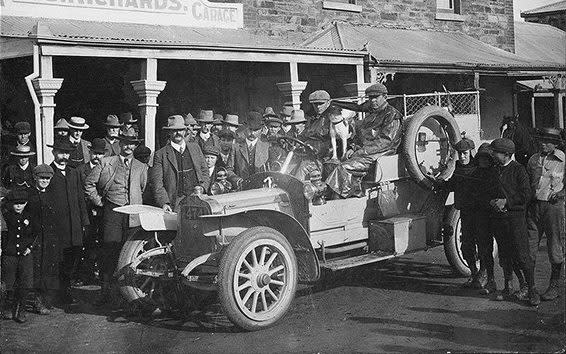
The crossing was hailed by everyone as a major achievement and a step along the road for the motor car's replacement of horse and camel power.
The vehicle is nowadays displayed at the National Motor Museum in Birdwood, South Australia.
Racing the Blue Train, 1930
An epic which drives the French bonkers, as open-road racing, whether against trains, planes or other cars, is much frowned upon.
The Train Bleu was a Calais-Méditerranée night express, run to transport the well heeled smart set away from dismal British winters down to the French and Italian Riviera in smart pullman coaches.
In March Woolf 'Babe' Barnato, racing driver and Bentley chairman, was holidaying in the French Riviera when over supper at the Carlton Hotel in Cannes, a friend bet him £100 he couldn't drive the 750 miles of the Train Bleu route to Calais faster than the French express.
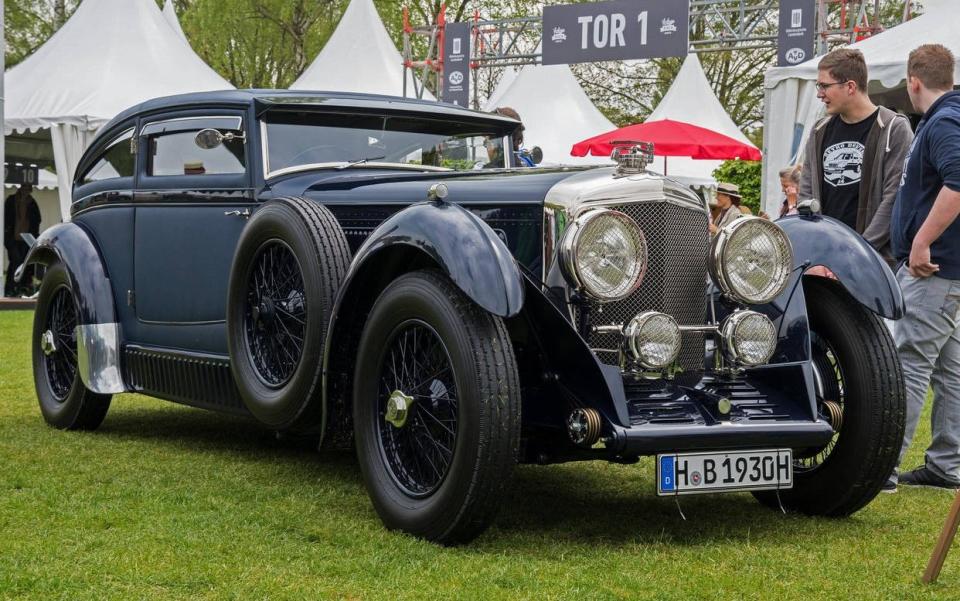
Barnato, aware of the previous runs, upped the odds by saying he could drive his Mulliner-bodied Bentley Speed Six to outside the Conservative Club in St James Street in London before the train reached Calais. The following evening on March 13, as the train steamed out of Cannes at 5.45pm, Barnato and his friend Dale Bourn set off from the Carlton in Cannes.
They lost time in rain and fog, nearly missed a refuelling stop, and had to change a punctured tyre, but reached Boulogne in time to catch the cross-Channel packet and made it to St James Street with four minutes to spare before the train reached Calais.
The French authorities were incensed and fined Barnato far more than his winnings from the bet and banned Bentley from that year's Paris Motor Salon for its part in advertising the illegal race. Barnato named his next Speed Six with special Gurney Nutting coupé coachwork the Blue Train car as a dedication and there's a well-known Terence Cuneo painting of that car racing the puffing steam train, although in reality the two were never side by side.
For tips and advice, visit our Advice section, or sign up to our newsletter here
To talk all things motoring with the Telegraph Cars team join the Telegraph Motoring Club Facebook group here

